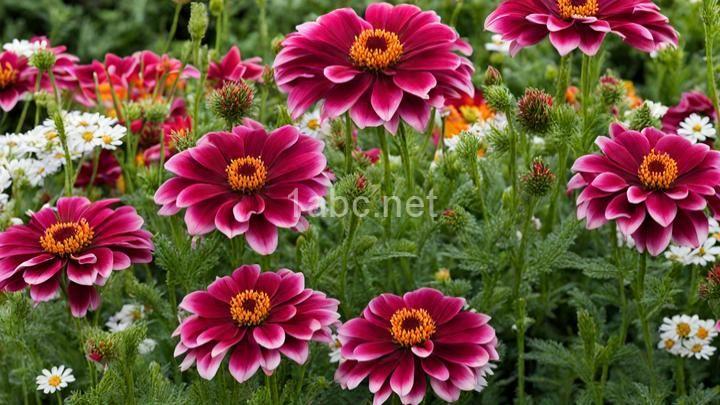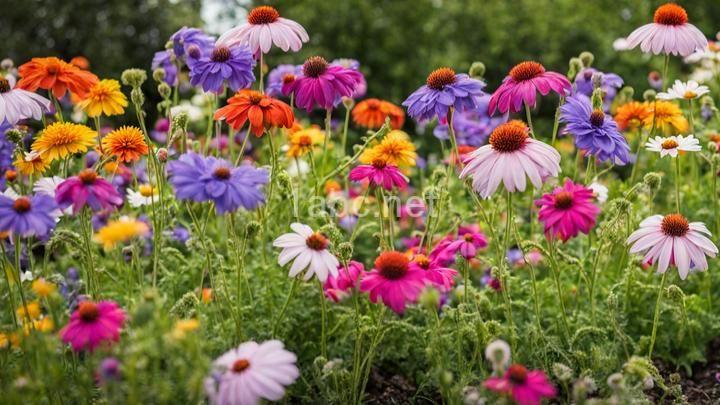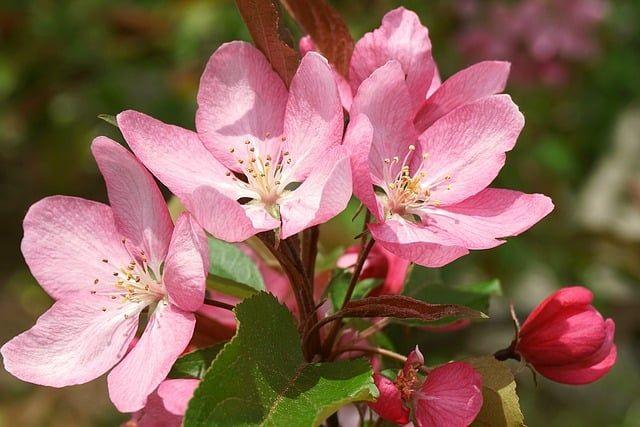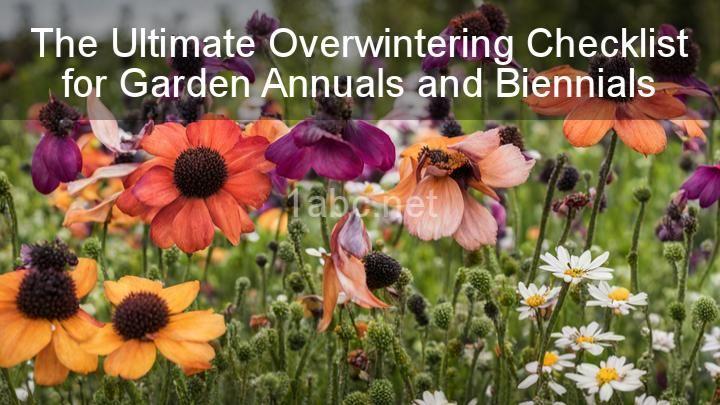Winter Care Tips for Biennial Plants in Your Garden

Introduction:
Winter can be a challenging time for gardeners, especially when it comes to caring for delicate biennial plants. These unique plants have a two-year life cycle, with the first year dedicated to vegetative growth and the second year focused on flowering. Proper winter care is crucial to ensure their health and blooming in the following year. As a fellow gardener, I understand the importance of this and I'm here to help you navigate through the winter months with ease.
I. Understanding Biennial Plants:
Biennial plants are a special category of plants that differ from annuals and perennials. Unlike annuals that complete their life cycle in one year or perennials that come back year after year, biennials have a two-year life cycle. In their first year, they focus on vegetative growth, developing strong roots and leaves. In the second year, they bloom and produce seeds before completing their life cycle. Understanding this life cycle is essential in providing the right care during winter.
II. Preparation Before Winter:
Before winter arrives, it's important to assess the health of your biennial plants. Remove any dead or diseased parts of the plants to prevent further damage. Pruning back tall stems can also reduce vulnerability to winter winds. By tidying up your plants before winter, you're setting them up for a healthier start in the following year.
III. Mulching and Insulation:
Mulching is a fantastic way to protect your biennial plants from freezing temperatures. Applying a layer of organic material such as straw or shredded leaves around the base of the plants helps insulate the roots and conserve moisture. It also acts as a barrier against harsh winter conditions. Remember to apply mulch without smothering the plants, leaving a small space around the stems to prevent rot.
IV. Watering and Hydration:
Even during winter dormancy, biennial plants need adequate hydration. Before freezing weather arrives, water your plants thoroughly to ensure they have enough moisture to sustain them through the winter months. If rainfall is scarce, periodically check the soil moisture and water as needed. Remember that overwatering can be just as harmful as underwatering, so finding the right balance is key.
V. Protection from Frost and Cold Winds:
When extreme cold spells hit, it's crucial to protect your biennial plants from frost and cold winds. Frost blankets or burlap wraps can be used as protective coverings. These materials provide an extra layer of insulation, shielding the plants from freezing temperatures. Alternatively, you can build windbreaks with stakes and fabric or plant your biennials near structures that provide natural shelter.
VI. Pest Control:
Even during winter, pests can still pose a threat to your biennial plants. Common offenders include aphids and slugs. To combat these pests, consider introducing beneficial insects such as ladybugs or lacewings that feed on aphids. Organic pest control remedies like neem oil or insecticidal soap can also be effective. Avoid using chemical pesticides that may harm the plants or the surrounding environment.
VII. Monitoring and Maintenance:
Regularly monitoring your biennial plants during winter is essential to catch any signs of stress or damage. Look out for symptoms of frostbite, such as blackened leaves or stems, and signs of root rot, like wilting or discolored roots. If you notice any issues, take corrective action promptly to prevent further damage. This could involve providing additional protection, adjusting watering, or seeking professional advice if needed.
Conclusion:
Caring for biennial plants during winter requires a little extra effort, but the results are well worth it. By understanding their unique life cycle and following these winter care tips, you can ensure healthy growth and abundant blooms in the following year. Remember, every gardener faces challenges, but with a little patience and dedication, you can create a beautiful garden that thrives come springtime. Happy gardening!
FREQUENTLY ASKED QUESTIONS
Why is winter care important for biennial plants?
Winter care is important for biennial plants because it helps them survive the harsh conditions of the colder months. Biennial plants have a two-year life cycle, with the first year dedicated to vegetative growth and the second year focused on flowering and seed production. During winter, these plants go through a period of dormancy, where their growth slows down or even stops.Proper winter care involves protecting biennial plants from freezing temperatures, strong winds, and excessive moisture. One way to do this is by providing insulation around the plants, such as using mulch or straw to cover the base of the plant. This helps to regulate the soil temperature, preventing it from fluctuating too much and causing damage to the plant's roots.
Another important aspect of winter care is ensuring that the plants are well-hydrated before the onset of winter. Adequate watering helps to strengthen the plant's root system and provides it with the necessary moisture reserves to survive the drier winter months.
Pruning is also an essential part of winter care for biennial plants. Removing any dead or diseased branches helps to prevent the spread of diseases and allows the plant to conserve energy for future growth.
By providing proper winter care, biennial plants can survive the cold season and be ready to resume growth and bloom in the following spring. This ensures their longevity and allows them to complete their life cycle successfully.
How do I prepare my biennial plants for winter?
To prepare your biennial plants for winter, there are a few steps you can take to ensure their survival and health. Here are some tips to help you get started:
-
Trim and clean: Before the first frost, trim any dead or diseased foliage from your biennial plants. This will help prevent the spread of disease and also tidy up the plants for winter. Remove any fallen leaves or debris from around the base of the plants as well.
-
Mulch: Applying a layer of mulch around the base of your biennial plants can provide insulation and protection from the cold. Use organic mulch, such as straw or shredded leaves, and spread it evenly around the plants. This will help retain moisture and regulate soil temperature during the winter months.
-
Watering: While biennial plants may not require as much water during the winter, it's still important to keep them adequately hydrated. Water the plants deeply before the ground freezes to ensure they have enough moisture to survive. Avoid overwatering, as this can lead to root rot.
-
Covering: If you live in an area with extremely cold temperatures, consider covering your biennial plants with a protective cloth or frost blanket. This can provide an extra layer of insulation and shield the plants from frost damage. Be sure to remove the cover during the day to allow for proper air circulation.
-
Pest control: Check your biennial plants for any signs of pests or diseases before winter sets in. Treat any infestations or infections accordingly to prevent further damage during the colder months.
Remember, the specific care requirements for your biennial plants may vary depending on the species. It's always a good idea to research the specific needs of your plants or consult with a local gardening expert for tailored advice. By taking these steps, you'll be giving your biennial plants the best chance of surviving the winter and thriving in the following growing season.
Should I cover my biennial plants during winter?
Yes, it is generally a good idea to cover your biennial plants during winter, especially if you live in an area with harsh winter conditions. Biennial plants, which have a two-year life cycle, can be more susceptible to damage from frost and freezing temperatures. By providing them with some protection, you can increase their chances of surviving the winter and thriving in the following year.Covering your biennial plants can be done using various methods. One option is to use a layer of mulch, such as straw or leaves, to insulate the plants and protect their roots from extreme cold. Another option is to use frost blankets or row covers, which can be draped over the plants to create a barrier against freezing temperatures.
The key is to ensure that the cover is securely in place and provides adequate protection. It should be large enough to cover the entire plant and extend a few inches beyond the edges. Additionally, make sure that the cover is not too tight, as this can cause damage to the plant.
Remember to remove the cover during periods of milder weather to allow the plants to receive sunlight and fresh air. This will prevent moisture buildup and potential disease or rot issues.
Ultimately, covering your biennial plants during winter can help safeguard them from the harsh elements and increase their chances of survival. It's a small investment of time and effort that can pay off in healthier, more resilient plants in the spring.
How often should I water my biennial plants in winter?
During the winter, biennial plants have different water needs compared to other seasons. Since they are in a dormant state, they require less frequent watering. However, it's essential to monitor the moisture level of the soil to ensure they don't completely dry out. As a general guideline, you should water your biennial plants in winter when the top inch of the soil feels dry to the touch. This usually translates to watering them every 2-3 weeks, but it may vary depending on your specific plant type, climate, and indoor or outdoor growing conditions. Remember, it's always better to underwater than overwater biennials during winter, as excess moisture can lead to root rot. Keep an eye on your plants and adjust the watering frequency accordingly to maintain their health and vigor.


